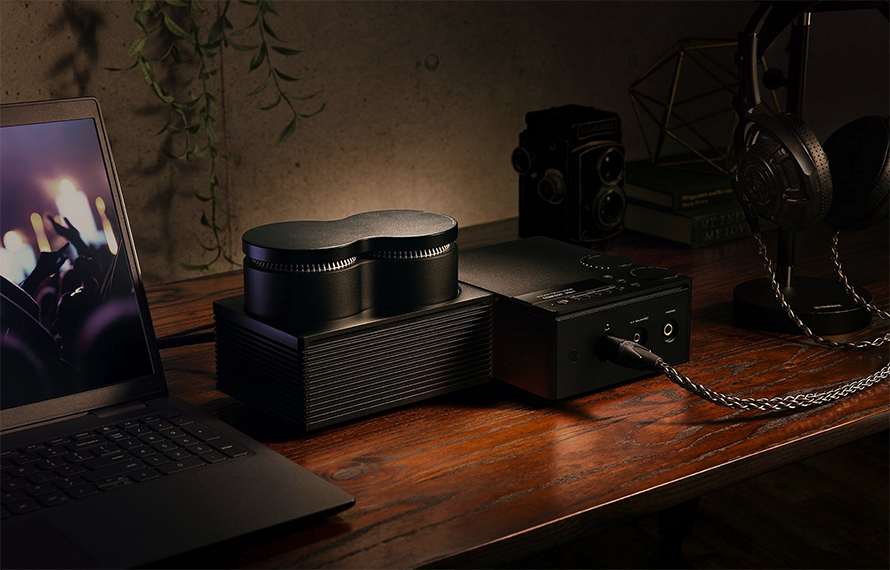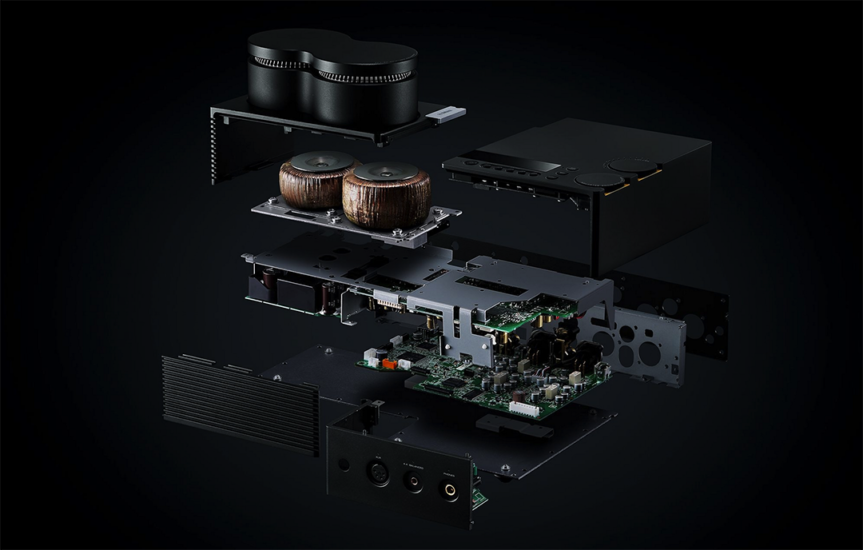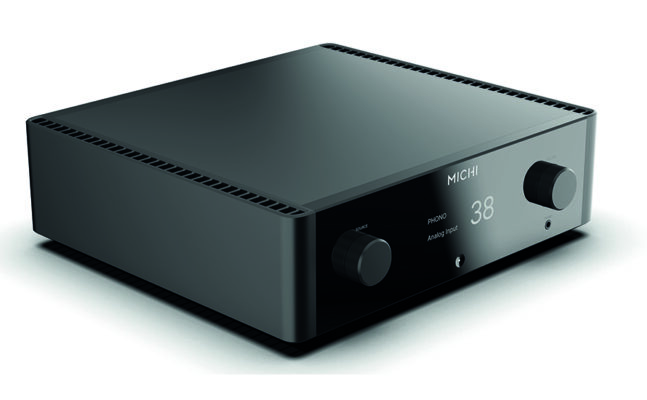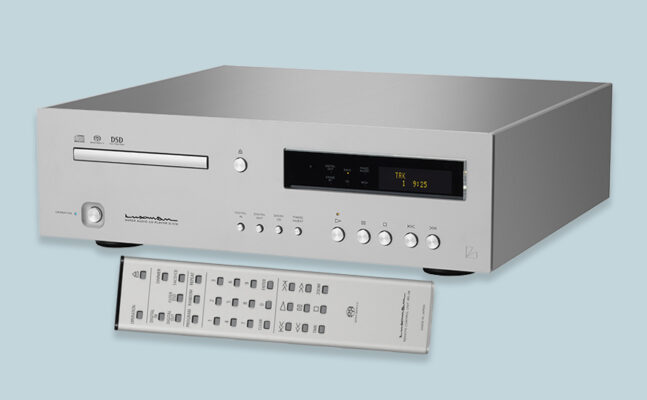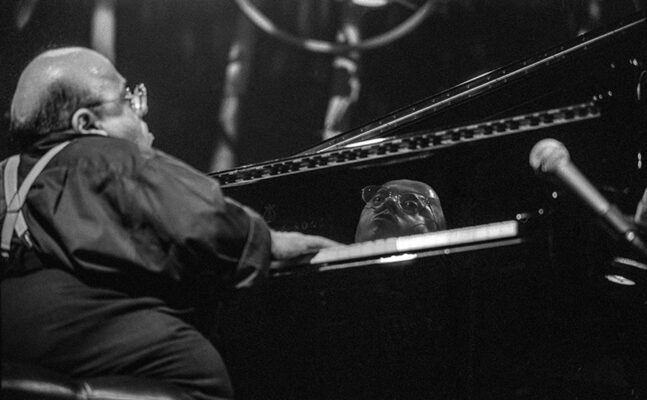Yamaha‘s new HA-L7A headphone amplifier made its debut in early May 2023 at the Australian Hi-Fi Show and later at the last High End Munich event. At that time, it was presented as a pre-production prototype. This high-end model was expected to follow the release of Yamaha‘s superb YH-5000SE headphones, which surprised high-fidelity journalists. Indeed, this manufacturer is not typically known for having a comprehensive headphone portfolio.
Nevertheless, Yamaha is back with this high-end headphone amplifier. Obviously, the HA-L7A is not within everyone’s budget, priced at $4,000 USD, but it has some features to justify this price. The HA-L7A was designed by the same team that developed the ultimate YH-5000SE headphones, so one might assume that this amplifier is specifically dedicated to these high-end headphones. Yamaha specifies that the HA-L7A headphone amplifier can power nearly any headphones from other manufacturers, including those with high power demands.
The HA-L7A’s look stands out from the competition with its unique industrial design. It appears as a solid L-shaped enclosure, giving the impression of two completely separate compartments. These two sections look visually distinct, with one dedicated to the power supply and featuring two cylinders on top. These cylinders serve as ventilated covers to conceal two toroidal transformers. One of the transformers powers the preamplification section of the HA-L7A, while the other handles the amplification section. The finish is superb, with solid, anodized black aluminum.
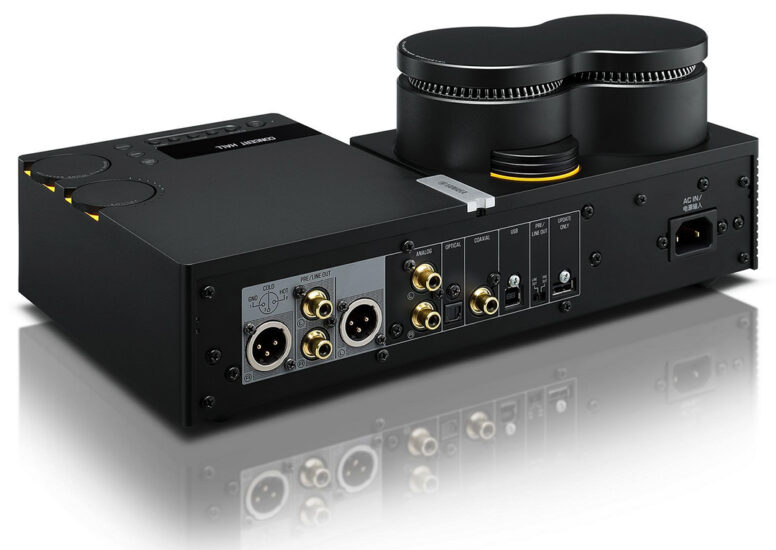
The section housing the audio circuits is equipped on top with a display screen that shows basic information such as volume level and input selection. Two flat knobs adorn the top of this enclosure, slightly protruding on the side for easy handling. One knob is for volume control, with small LED indicators indicating the level. The other is for changing listening modes. A button labeled “Pure Direct” allows, in the case of simple amplification, the deactivation of all circuits involving the DSP conversion stages. Overall, it exudes a sense of solidity, with metal plates added in strategic places inside. The unit appears ready to combat external vibrations with its five metal conical feet equipped with anti-vibration cushions.
Yamaha engineers have optimized their patented floating ground symmetrical amplification technology. A total of four amplification circuits are used for the positive and negative parts of each of the two channels. This results in a fully symmetrical output stage for Class A/B operation. Volume adjustment is done using a MUSES72323 chip, allowing for very fine 0.25 dB increments. All circuits, including the power supply, are completely isolated from the ground, protecting them from voltage fluctuations in the mains power and its induced noise.
The DAC section features an ultra-high-performance ES9038PRO chip with eight channels from the renowned manufacturer ESS Technology. This chip operates at a resolution of 32 bits / 384 kHz. Four of these eight channels are used per channel for precise conversion with a wide dynamic range and excellent signal-to-noise ratio. This conversion chip is accompanied by two high-precision clocks set at 44.1 kHz and 48 kHz, eliminating jitter, while the chip integrates eight types of digital filters. All stages following the DAC are unified by a symmetrical and discrete configuration circuit, ensuring perfect transmission for headphones equipped with a symmetrical connection.
The HA-L7A amplifier features Yamaha‘s CINEMA DSP Sound Field Technology, developed for their home cinema receivers. It includes a unique multi-channel signal processor from Yamaha that provides various listening environments, including Cinema, Drama, Background Music, Concert Hall, Outdoor Live, and Music Video.
The front panel is well-equipped for various headphone types, featuring a 6.35 mm standard jack output, a 4.4 Pentaconn balanced output, and an XLR connection. At the rear, there is a switchable PRE/OUT output with RCA or XLR connectors, as well as an Analog input. The PRE/OUT outputs are variable gain, allowing the HA-L7A to function as both an external DAC and a preamplifier for a power amplifier or active speakers. As for digital inputs, you’ll find an optical Toslink, a coaxial, and an asynchronous USB-B input. Supported digital formats include PCM up to a resolution of 32 bits / 384 kHz and DSD up to 11.2 MHz.
At the time of writing, the availability and Canadian price of the Yamaha HA-L7A headphone amplifier are not yet available, but more information should be available in the fall.
For more information, you can visit the headphone section of the website at ca.yamaha.com


